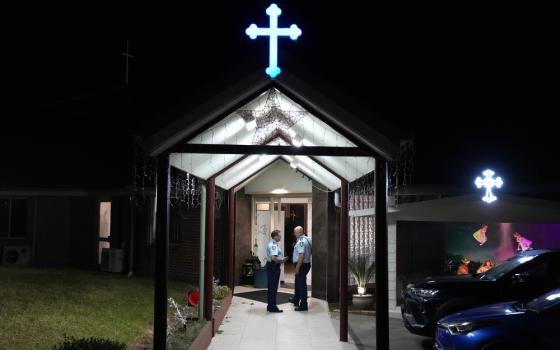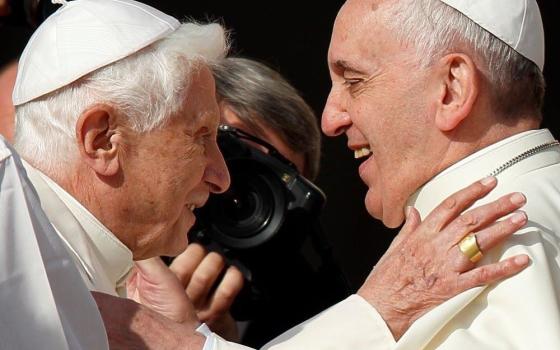
Commentary
In “Sir! No Sir!” David Zeiger’s 2006 documentary about G.I. resistance to the war in Vietnam, Bill Short tells how revolted he was by having to count the bodies of enemy dead for his unit. When he refused to do it any longer, he was sent for psychological counseling. At the moment he thought he was about to be remanded for psychiatric confinement, the shrink, as Short refers to him, pulled a copy of the Nov. 9, 1969, New York Times from his desk and pointed to a full-page advertisement against the war signed by 1,365 active-duty GIs. Bill didn’t need a diagnosis, he needed a social movement — and there it was.
Short’s story is the turning point in the film that also reconnects us with the historical juncture when in-service resistance combined with the outpouring of public sentiment against the war and Vietnamese military successes to accelerate the pace of U.S. withdrawal from Southeast Asia.
The film and Short’s story were brought to mind by a Dec. 24 front-page story in The New York Times reporting on changes the Army has made following the Nov. 5 shooting of 13 people at Fort Hood, Texas, by Army Maj. Malik Nadal Hasan. Written by James Dao, the story said that the Army was “reaching out ... to disaffected soldiers, deserters and war resisters” in an effort to identify the gaps in its system. Taking the turn that Short’s story in the film did not take, however, Dao loaded his report with references to “frail soldiers,” “suicides” and “therapy.”
The mental health terms sprinkled through Dao’s story stood out against the details of the case that he used as an example to, ostensibly, illustrate the Army’s new approach. Eric Jasinski, 23, spent 15 months in Diyala Province north of Baghdad, Iraq, with an intelligence unit “collecting data used in air strikes.” That data, wrote Dao, “killed many Iraqis, perhaps including civilians.” Returning home in late 2007, Jasinski experienced bouts of anger, depression and excessive drinking.
A doctor told Jasinski he had posttraumatic stress disorder and prescribed antidepressants. Jasinski thought he could stick it out until his February 2009 honorable discharge but when the Army scheduled him for return to Iraq in 2009, he took the advice of his parents to stay home. He deserted. One of his commanding officers told his mother he didn’t believe Eric had posttraumatic stress disorder. Jasinski turned himself in to authorities in late December and as reported by Dao was “checked into Fort Hood’s mental ward” by doctors.
There is little in Dao’s report to convince readers that Jasinski was “combat stressed.” He was collecting data, not counting dead bodies as Short was. But there is enough in it to suggest that Jasinski needed the option of acting on the revulsion to war that he feels. If Jasinski had been with Short’s psychiatrist, he might have walked out of the office with a phone number for Iraq Veterans Against the War. But instead, Dao writes, he’s been subjected to the Army’s “three-week soldier ‘reset’ program,” which “uses cranial massage, yoga and acupuncture to alleviate the hyper-vigilance that accompanies the stress disorder.”
Jasinski and uncounted other service members march forward into wars they don’t like, avoiding jail time or commitment to the mental ward. It doesn’t need to be that way, but the national conversation surrounding the people fighting our wars has been so totally subsumed by a medical discourse that the only way off the path to war for many leads to mental rehab or the pharmacy.
The antiwar movement is ensnared by that same discourse. To leverage its opposition to conflict, movement leaders often reach for the rhetoric of risk and loss, toting the human damage of war in order to build a case for peace. But it’s a calculus in which soldiers and veterans are worth more as victims than allies. Meanwhile, military authorities make similar calculations: Better to embrace Jasinski as a mental health problem than push him into the organized resistance movement where the power of his political views would be amplified.
The military is using diagnostic categories to manage the tensions created by the wars in Iraq and Afghanistan, a strategy that co-ops the humanitarian impulse widespread in America to care for the casualties of war. It’s a nasty strategy with the potential to stigmatize the soldiers and veterans opposed to war and isolate them from friends, family, and the antiwar movement with which they have a natural affinity. It’s a strategy that needs to be challenged.
Activists who would decry the insensitivity of the commander in the Times story who denies Jasinski’s posttraumatic stress disorder should think twice, lest that sentiment license the military to medicalize the dissent of more soldiers.
The military has rethought the use to be made of mental health practices in today’s political culture. Now, the activist community needs to strike a new balance between acknowledging the casualties of war on the one hand, while recognizing the need to support in-service resisters and allying with the energy and insight that soldiers and veterans bring to the movement.
[Jerry Lembcke is associate professor of sociology at College of the Holy Cross in Worcester, Mass. He has written about posttraumatic stress disorder in The Spitting Image: Myth, Memory, and the Legacy of Vietnam. His new book Hanoi Jane: War, Sex, and Fantasies of Betrayal will be out in 2010 from the University of Massachusetts Press.]




